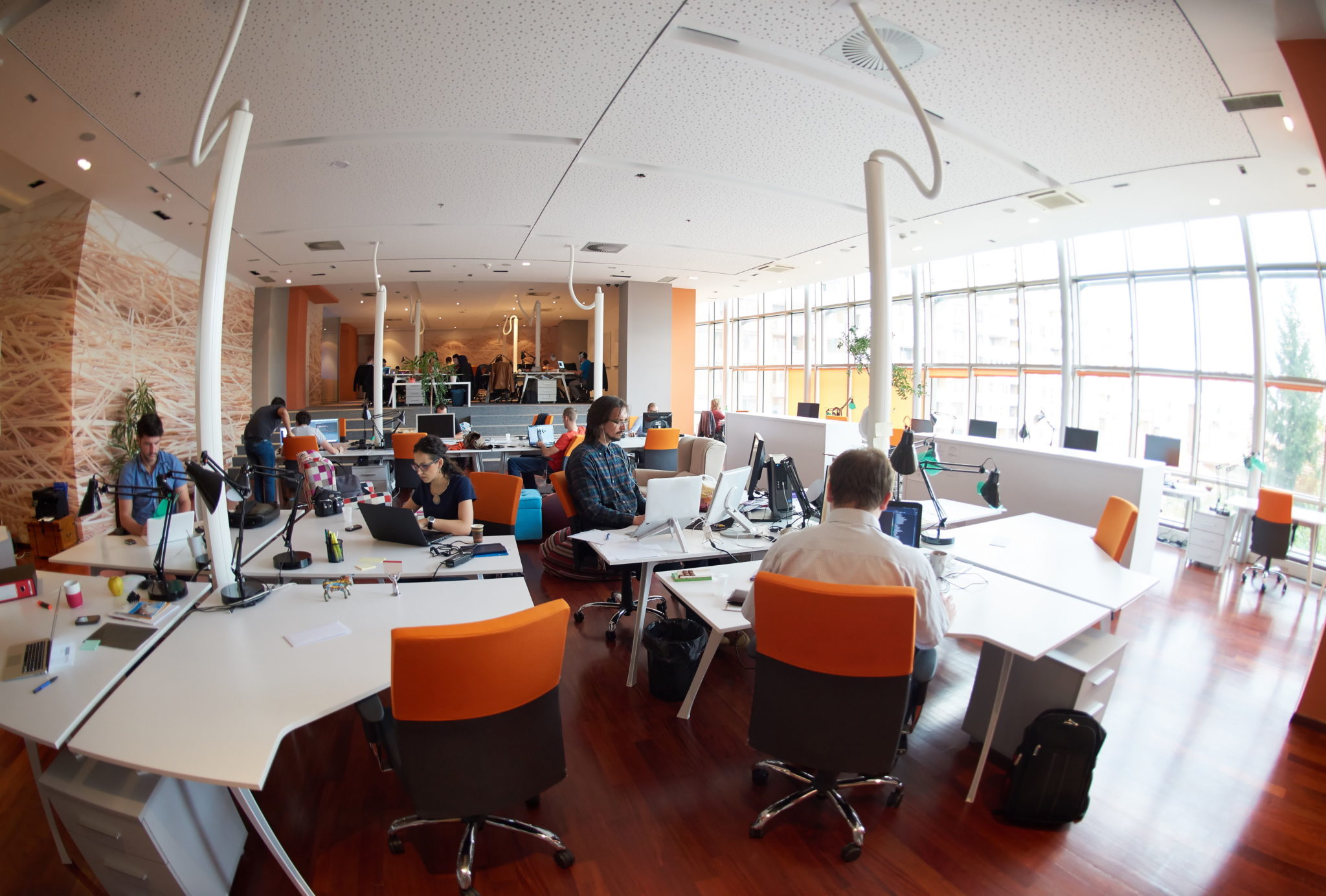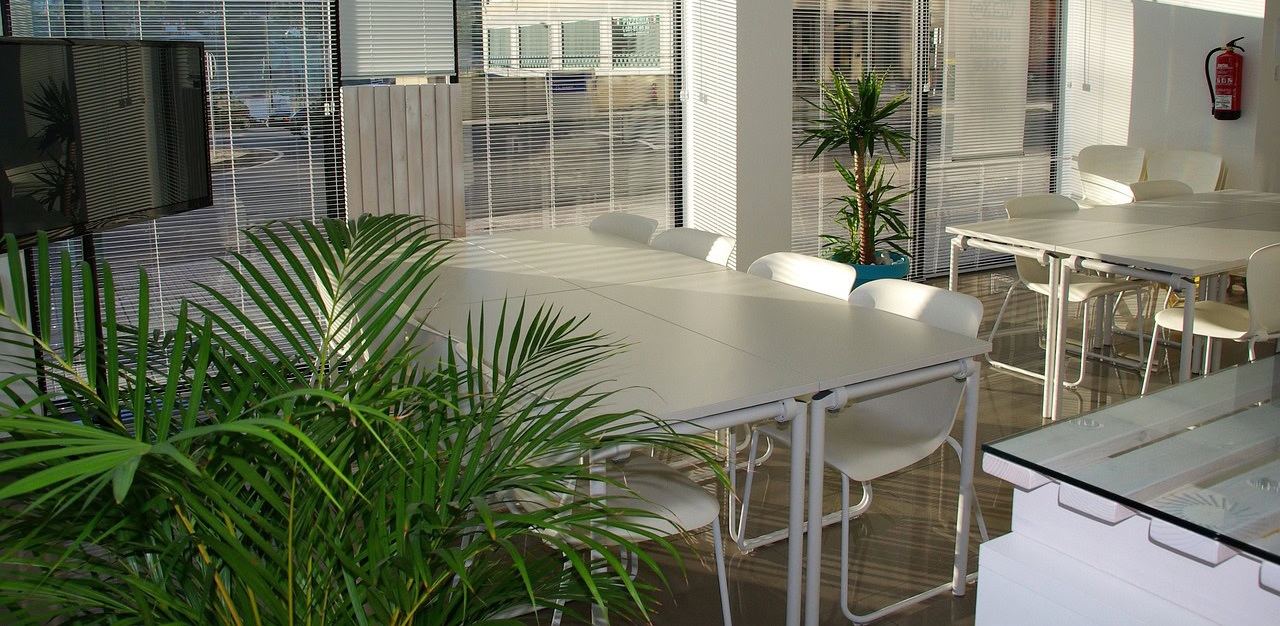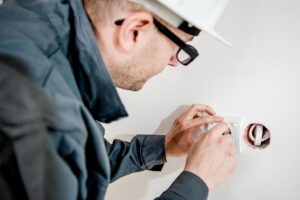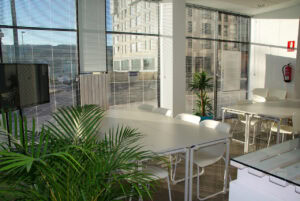Modern Office Spaces – Everything You Need to Know
Walk into any business a few years ago and you’d expect to see a rigid maze of cubicles and desks, supported by the traditional nine-to-five structure. The modern office space is, however, very different and constantly evolving to support a modern workforce; accommodating work-from-home policies, embedding new forms of technology like VR, and fundamentally, providing a space employees want to inhabit.
The future office, particularly in the wake of the Covid pandemic, lies in designing flexible workspaces. It is critical to consider hybrid working policies, employee concerns and the fundamental requirements of the businesses they house from the outset.
It also lies in facilitating those re-designs and ensuring that everything runs smoothly, maintaining business continuity. Whether it’s a re-design of an existing space, a move to a different floor in the same building, or an entire office relocation and refit in a new city, our expertise lies in managing the process from end to end.
Three Key Components of The Modern Office Space
When it comes to creating a new office space there are three components’ businesses need to consider in attracting and retaining talented staff. Crown Workspace Singapore has witnessed the shift in the last few years from the traditional office space to one which takes account of employee wellbeing and gives weight to the future and changing uses of buildings. There is a distinct focus, not just on providing an office, but on how to create the best possible environment to ensure employee safety, wellbeing and maximize productivity.
A. Focus on Wellness
Wellness is more than just a fashionable trend, it’s fundamental to creating an office space your staff actually want to be in. Businesses are paying more attention to staff wellbeing than ever before because study after study shows a correlation between happiness and productivity. There is an innate understanding that the boundaries between home and work life have become increasingly blurred.
Indeed, this is evident during the hiring process for many companies, with growing numbers of candidates citing the office environment as one of the major attractions. Naturally, there is the more frivolous aspect to it with free bars, games areas and even slides, but on a more serious note it takes a more holistic approach to future office spaces and reflects the positive benefits of investing in employee wellbeing.
As a result, companies are working hard to turn their offices into a destination rather than a mere office, making them an important part of their overall company culture. This is important from an employer branding perspective too, competition for high-quality applicants is only increasing, and a great office space is a big part of that offering.
B. Give Team Members the Freedom to Work Anywhere
Flexible working was a trend long before the pandemic reared its head, although the advent of Covid accelerated the decentralization of many offices. Since then, it has become essential and a key consideration for businesses rather than an optional one. As the pandemic recedes there is a clear trend with three different styles emerging.
- There are those businesses that find it essential to have everyone back in the office.
- Many businesses are also adopting a hybrid working model where they may spend a few days in the office and a few days working remotely.
- Some businesses have moved to a permanent work from home scenario where an office is only required occasionally for collaborative meetings.
C. Support a Wide Variety of Devices
Tech is the third area that’s a key to the modern office space. This can cover everything from the Wi-Fi infrastructure, automated temperature and humidity controls, through to safety measures to ensure employee comfort in a post-pandemic world.
For example, one innovation involves attaching smart sensors outside of meeting room doors, allowing staff outside the room to know how many people are in a room. They can then decide whether they feel comfortable entering.
Reimagine your workspace

Re-designing a workspace starts with key stakeholder meetings. Often businesses will understand that what was relevant five years ago no longer fits with current business practices, but an expert view can translate those concerns into tangible moves forward.
Once a plan is agreed and in place it’s a case of dealing with the logistics of moving an office, whether that’s a department of 20 people from one floor to another or a company moving 1000 employees from city to city or anywhere else in the world.
The pandemic has influenced what the modern office space looks like. We spoke to our Workspace experts to find out how.
- Demand for Solo and Socially Distant Space
Social distancing may no longer be mandatory in some places but demand for socially distant office spaces still exists. While restrictions are no longer in place in a lot of countries, there is still a move towards “hoteling” of the work environment – greater space between desks, soft furnishing, and plants to add a homely feel but which also subtly put distance between staff.
There will be moves to create separation between people without losing the benefits of collaboration and allowing them to work in a safe environment. Socialization is of course crucial for any working environment that wants to win over employees.
- Work from Home Will Inspire More Agile Workplaces
Workplaces may shrink because of the pandemic, with people only working in an office part-time which will naturally lead to a reduction in floorspace requirement.
Then, it becomes a case of using that workspace effectively for flexible working or collaboration coupled with greater technology to allow for an agile workplace.
- Cleanliness Is Automated
Cleanliness has become more relevant than ever and it’s also benefitting from technical innovation. Crown Workspace has worked with clients to install systems which monitor the number of users per workspace and the time between cleans.
Such systems can also provide real-time data on which areas receive most traffic, examine user density, and send automated messages when a clean is required. Increasingly, the materials used in a modern office space reflect this greater hygiene awareness with walls clad in PVC to create an impenetrable bond to bacteria, for example.
Materials with antiviral and antibacterial properties, like copper and its alloys, are also being installed in areas such as bathrooms and on handles. We should start to examine what are the short and long-term workplace trends in a post-Covid world?
All things considered; we can expect a different workplace than the one we left behind pre-pandemic.
All things considered; we can expect a different workplace than the one we left behind pre-pandemic.
There isn’t a business in the world that hasn’t been affected and learned, both good and bad. Those experiences will have a long-lasting impact on the modern office space and have already transformed it immeasurably. We can expect to see many of those changes become permanent as businesses adapt a more flexible, hybrid way of working post pandemic.
Start transforming your workspace today – we’re here to make sure your business keeps moving forward. Speak to one of our experts to find out more.
Related stories
Walk into modern offices and you’ll see the motifs of sustainability: a living wall in reception, branded reusable mugs in the pantry, perhaps even a rooftop beehive. These are the sort of things that photograph well and tick boxes in annual reports. But what truly makes an office “green”? The uncomfortable truth is that many […]
Sustainability is everywhere in workplace design. From rooftop gardens to recycled coffee cups, offices are quick to showcase their “green” credentials. But how much of this activity delivers genuine environmental impact, and how much is simply optics?
Let’s start with the conclusion: The honest answer is that both stories are true. Some organizations are taking up more and larger offices, others are compressing. What ties the two together is a single idea that now sits at the heart of Facilities Management: rightsizing. Size follows purpose. If the purpose is clearer collaboration, better […]





























